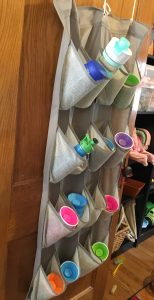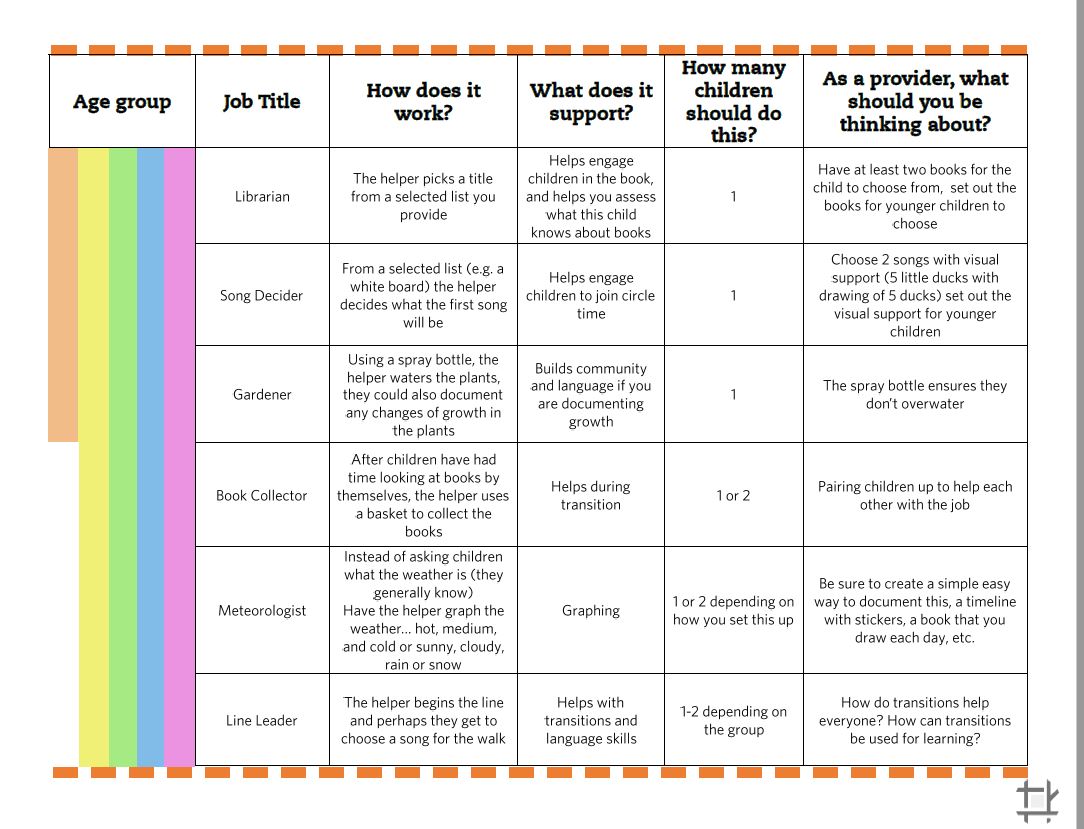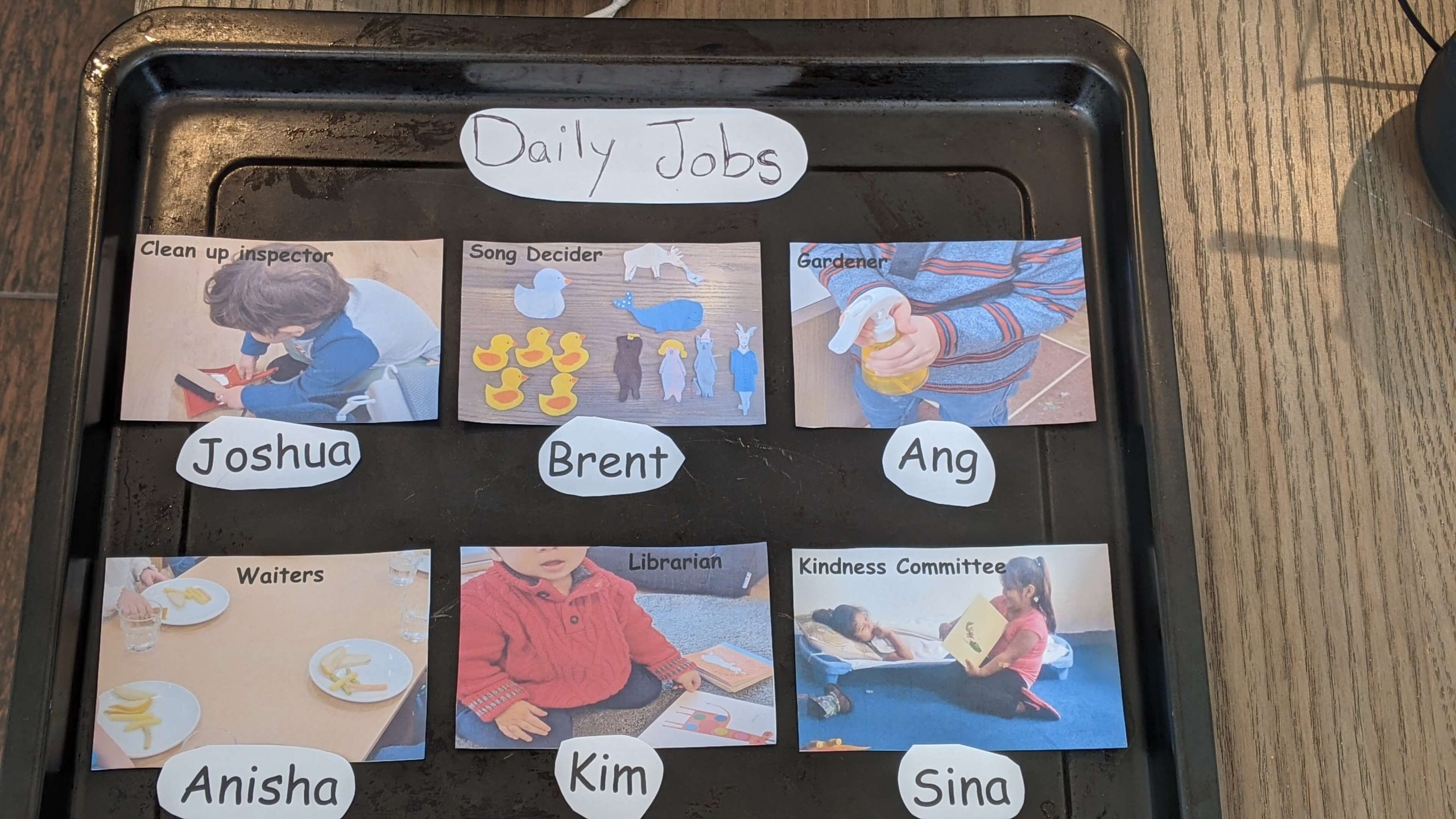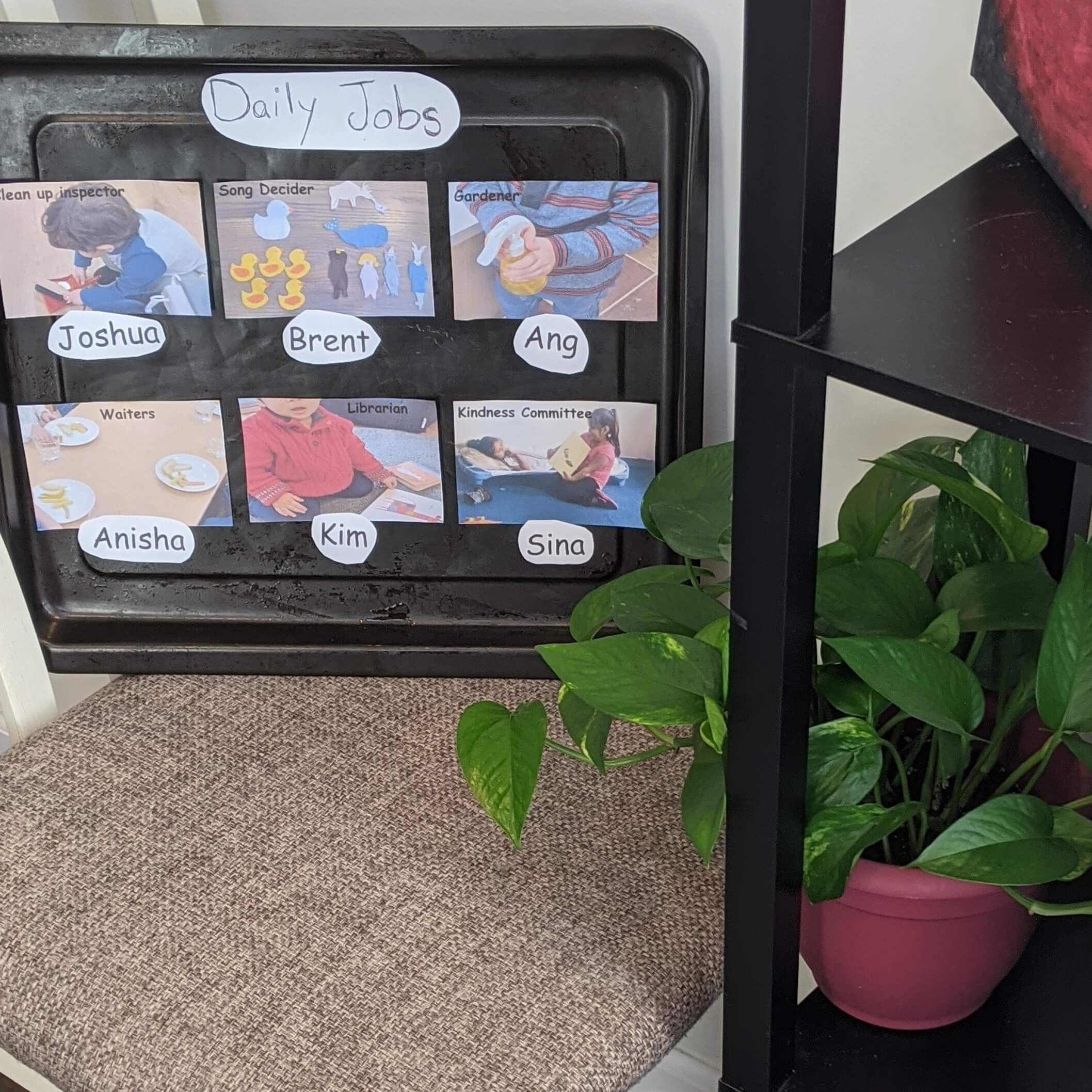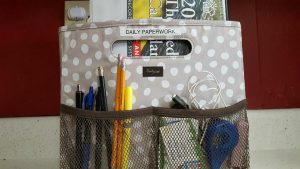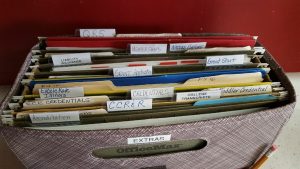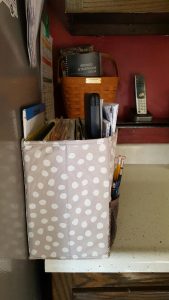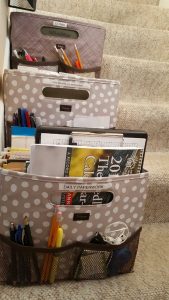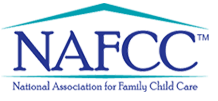Do the children in your program bring a water bottle to use throughout the day? Do they have trouble keeping track of it or do you find they take up table space? BJ Richards has an excellent idea for storing water bottles that she uses in her program that allows the children to easily access and put away their water bottle throughout the day. This fabric shoe organizer is inexpensive and takes up very little space as it can hang right on the back of a door or on the wall.
Daily Jobs are an excellent way to build a community in your program and develop a sense of purpose in children. This Town square created resource guides in understanding the importance of jobs, how they can be beneficial in the program’s daily schedule, and how to best utilize them for your specific children.
After selecting the jobs that best fit your program, one way to create a job chart is to use a baking sheet and magnets. Take pictures or have children draw the jobs, then print or have children write their name (if possible laminate them). Attach a magnet to the names and the jobs. Alternatively, you can use a felt board and velcro. Make sure that the Job chart is visible daily for children, and they can have access to it if they need to look at their job for the day.
As adults, we utilize a calendar for scheduling and to remember important events and holidays. While it might be second nature to look at the calendar and understand which month, date, and day of the week we are in, a calendar is very confusing for children. We can utilize a calendar because we have gained the knowledge and experience to know how time works. Young children are developing this skill.
To foster this understanding the focus of calendars should be a visual representation of a sequence (yesterday, today, tomorrow). Time should also be relatable to children, by understanding what they did in the morning (arrival), afternoon (after a nap), evening(at home). A great tool to use in the classroom to help children build this understanding is a linear calendar. A linear calendar helps children understand the pattern of time, incorporate their own experience of the day, and visually see time moving.
Looking for a way to keep your business records more organized? Kim Tipsword, owner of Kimmy’s House, shared this idea for a portable office. She uses these portable file boxes, one for DCFS files (physical forms, child records, space radon report, etc.), one for credentials for Grants, Excelerate, etc., and one for things she uses daily (calendar keeper, meal counts, and receipts).
She keeps her portable office on her stairs because she doesn’t use her second floor often. These could also fit under a coffee table or alongside a couch or on the counter.
The National Association for Family Child Care (NAFCC) is a membership based national association for family child care providers. The NAFCC site includes tools for NAFCC accreditation including a self-study program to help providers prepare for accreditation. There is a calendar for national events for family child care providers including the NAFCC conference, a blog about relevant topics for family child care providers, and information for families and the public regarding family child care.
Get your tax payments organized at the federal and state level by creating an account with the U.S. Department of the Treasury and the state of Illinois.
The Electronic Federal Tax Payment System® tax payment service is provided free by the U.S. Department of the Treasury. After you’ve enrolled and received your credentials, you can pay any tax due to the Internal Revenue Service (IRS) using this system. You can also set up an account for the state of Illinois at My Tax IL.

